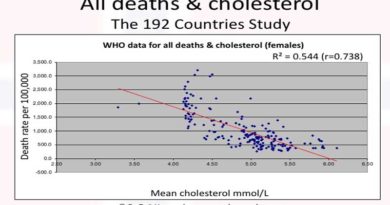Men & women & dieting

Executive summary
* An article was published from the US DIETFITS study. This study randomised 609 men and women to either a healthy low-carb (HLC) or healthy low-fat (HLF) diet and examined weight loss and other measures over a 12-month period.
* The diet started off genuinely low carb and low fat for 8 weeks – 20g of carbohydrate or fat daily on each diet – but then participants were advised to move to the level of carb or fat intake that they believed they could sustain for the trial.
* By the end of 12 months, the low-carb dieters averaged 30% carb intake; by the end of 12 months, the low-fat dieters averaged 30% fat intake. Both groups had tended back to more of a 'balanced' diet.
* This study found that HLC men lost more than HLF men and HLC men lost more than HLC women. Plausible explanations were given for this.
* The study also examined adherence to each diet. Men doing the HLC diet were the most adherent and women doing the HLC diet were the least adherent. The paper adjusted for adherence and found that the difference in weight loss wasn't explained away by adherence.
* There were other interesting findings in the paper beyond the outcomes chosen by the researchers. Calorie intake fell across all groups (to between 75-80% of baseline calories). Despite this, the average weight loss was barely a pound (less than half a kg) a month.
Introduction
A study was published in the International Journal of Obesity this month (January 2021). It was called "Examining differences between overweight women and men in 12-month weight loss study comparing healthy low-carbohydrate vs. low-fat diets" (Ref 1). Healthy low-carbohydrate will be abbreviated to HLC and healthy low-fat to HLF throughout this note.
The paper was from a trial that we first looked at almost two years ago in February 2018 (Ref 2). The trial is called DIETFITS. This acronym comes from “Diet Intervention Examining The Factors Interacting with Treatment Success.” The paper we reviewed two years ago looked at the concept of dieting and genotype – was there a right diet for different people? The answer was “no” to that research question, but the trial has been re-examined for another research question.
The objectives of this latest study were two-fold. The first aim was to compare 12-month changes in weight, fat mass, and lean mass between the four groups (men HLC, women HLC, men HLF, women HLF). The second aim was to assess whether or not adherence differed by sex and the diet to which people were assigned.
The study
The DIETFITS study started in January 2013. Between that date and April 2015, 609 adults, aged 18 to 50 years (average age 38-40), were enrolled into the trial. The adults had a BMI in the range 28-40 (average BMI 33), but didn’t have other conditions such as diabetes, cancer, heart disease etc. 57% of the participants were women. The final follow-up date was May 2016.
Participants were randomly assigned to a 12-month diet described as healthy low-fat (HLF) or healthy low-carb (HLC). The numbers allocated to each diet group by sex were as follows: HLC women n =179, HLC men n = 125, HLF women n = 167, HLF men n = 138. (By the end of the trial, the numbers in each group were HLC women n =132, HLC men n = 92, HLF women n = 127, HLF men n = 98, meaning that 24%-29% of people did not complete the 12-month trial). Both groups participated in 22 small group sessions during the 12-month study (covering diet and exercise advice, emotional awareness, behavioural modification, cognitive change etc), so the intervention was quite intensive.
The random allocation of people to diet groups achieved very low differences in characteristics between the four groups (sex/diet). There were no significant differences between the four groups for age, education, ethnicity, BMI, and smoking. Weight was different, as would be expected between men and women, but average BMI wasn’t. Because weight and body fat percentage were two key measurements in the trial, they were adjusted for.
The diet
The main dietary goal was described as “to achieve maximal differentiation in intake of fats and carbohydrates between the 2 diet groups while otherwise maintaining equal treatment.” During the first eight weeks, the participants limited their daily fat or carbohydrate intake to 20 grams.
The rest of this article is available to site subscribers, who get access to all articles plus a weekly newsletter.
To continue reading, please login below or sign up for a subscription. Thank you.




